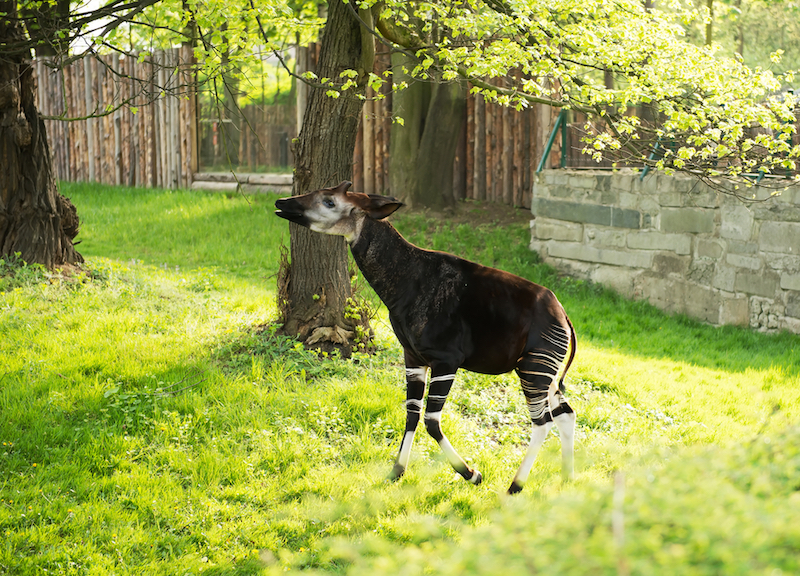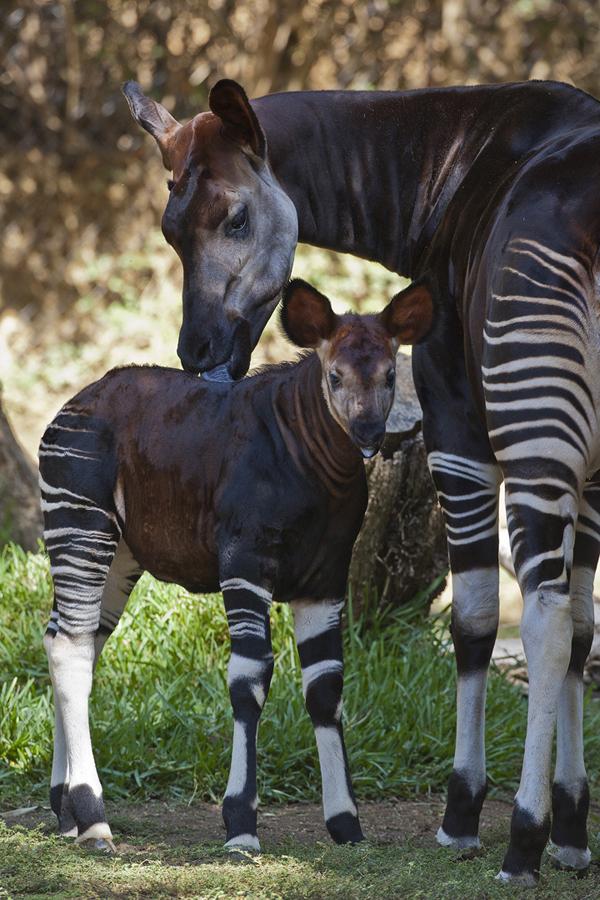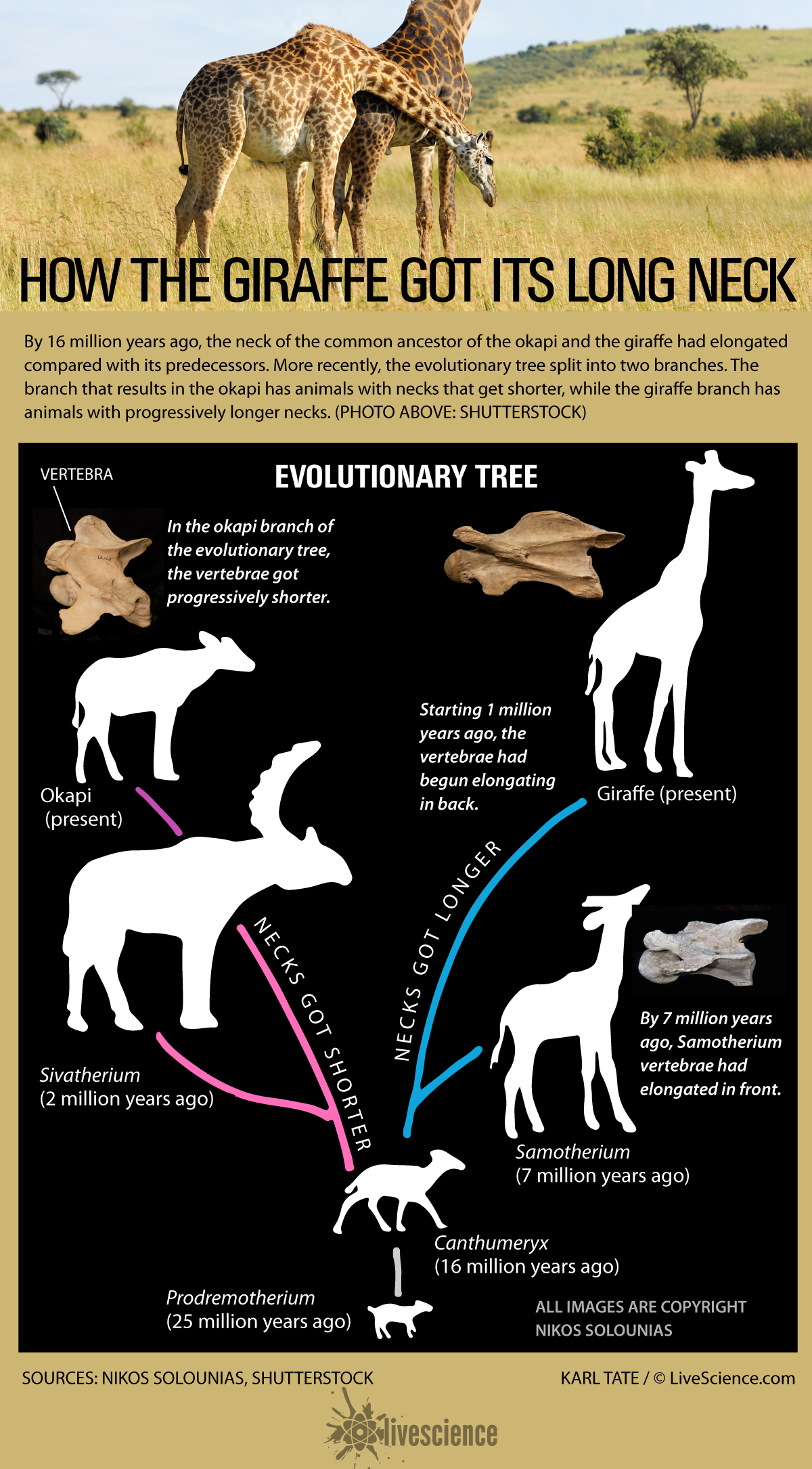Okapi: Facts About the Forest Giraffe

Though sometimes called forest giraffes, this creature doesn’t look like a giraffe. It does have a long tongue, but it has the body of a horse and its legs have stripes, like a zebra. Males also have two small horns on the tops of their heads that are covered with skin. Okapi are part of the Giraffidae family, according to the Integrated Taxonomic Information System (ITIS), which does make them relatives of giraffes.
Size
Okapi are about 5 feet (1.5 meters) tall. Females are typically a little heavier at 495 to 770 lbs. (225 to 350 kilograms) while males weigh 440 to 660 lbs. (200 to 300 kg).
Habitat
These animals are found in the African rainforest where trees are dense. They are native to the Democratic Republic of Congo and are typically found within the Ituri Forest, according to the Rainforest Alliance.
Habits
Okapi are solitary and territorial. They have scent glands on their feet that spread sticky, tar-like territory markings to alert others of their region. Males also mark their territory with urine. On rare occasions, okapi join together to eat in small groups. During this time okapi may groom each other and play together.
They are most active during the afternoon and evening, spending this time in search of food, according to the San Diego Zoo. They follow paths worn through the forest foliage by other okapi who have trod before them. Males tend to have a larger territory and may travel up to 2.5 miles (4 kilometers) a day.
Diet
Okapi are herbivores, which means they eat only vegetation. They will reach up into trees with their tongues, pull down a branch and rake off the leaves with their mouths as they let go of the branch.
They also eat twigs, buds, fungi, fruits and other vegetation that can be found in the rainforest’s understory. Clay from riverbeds is also important to their diet. The clay gives them minerals and salt that they may not be getting from vegetation. An okapi can eat between 45 and 60 lbs. (20 and 27 kg) of vegetation each day, according to the Rainforest Alliance. Like a giraffe, the okapi has to spread its long legs to get close enough to the ground to get a drink of water.
Get the world’s most fascinating discoveries delivered straight to your inbox.
Offspring
Female okapis typically only give birth to one baby at a time. Birth comes after a gestation period of 14 to 16 months, and the young is born in a nest on the ground.
Baby okapis are called calves. They are about 2.6 feet (80 centimeters) tall when they are born and weigh about 35 lbs. (16 kg). Calves triple in size by the time they are 2 months old.
Calves can walk 30 minutes after birth. They don’t defecate until they are between four and eight weeks old, according to the San Diego Zoo. This is a defensive maneuver. Without the smell of feces, it is harder for predators to track the vulnerable newborn.
Okapis become mature around 2 to 3 years old and live 20 to 30 years.
Classification/taxonomy
Here is the classification of okapi, according to ITIS:
Kingdom: Animalia Subkingdom: Bilateria Infrakingdom: Deuterostomia Phylum: Chordata Subphylum: Vertebrata Infraphylum: Gnathostomata Superclass: Tetrapoda Class: Mammalia Subclass: Theria Infraclass: Eutheria Order: Artiodactyla Family: Giraffidae Genus: Okapia Species: Okapia johnstoni
Conservation status
The International Union for Conservation of Nature (IUCN) lists the okapi as endangered. This is because the rate of population decline is estimated to have exceeded 50 percent over the past 24 years.
The population is continuing to decrease. According to the San Diego Zoo, only 25,000 are believed to be alive in the wild. IUCN lists human habitation of the okapi’s home area and hunting as causes for the population decline.
Ancestry
The common ancestor of the okapi and giraffe lived about 16 million years ago. This ancestor, known as Canthumeryx, had an elongated neck, according to a 2015 study published in the journal Royal Society Open Science. After Canthumeryx, the family tree split into two branches, with the ancestors of the giraffe on one side and the precursors to the okapi on the other.
While the giraffe ancestors' necks lengthened over time, the animals on the okapi side developed shorter necks.
Before the 2015 study was published, experts suspected that the okapi was "more primitive" than modern giraffes, because it had a shorter neck, Nikos Solounias, a professor of anatomy at the New York Institute of Technology (NYIT) College of Osteopathic Medicine, told Live Science. But now, scientists know that the okapi shared a long-necked common ancestor with the giraffe, and it developed separately on a different branch of the family tree.
Other facts
The okapi wasn’t discovered by Western scientists until 1900, according to the Rainforest Alliance.
Okapi have thick, oily fur that keeps them dry when it rains.
In addition to being a great utensil for eating, their tongue is also used for grooming. It is so long they can reach their eyes and ears with it.
Additional resources





